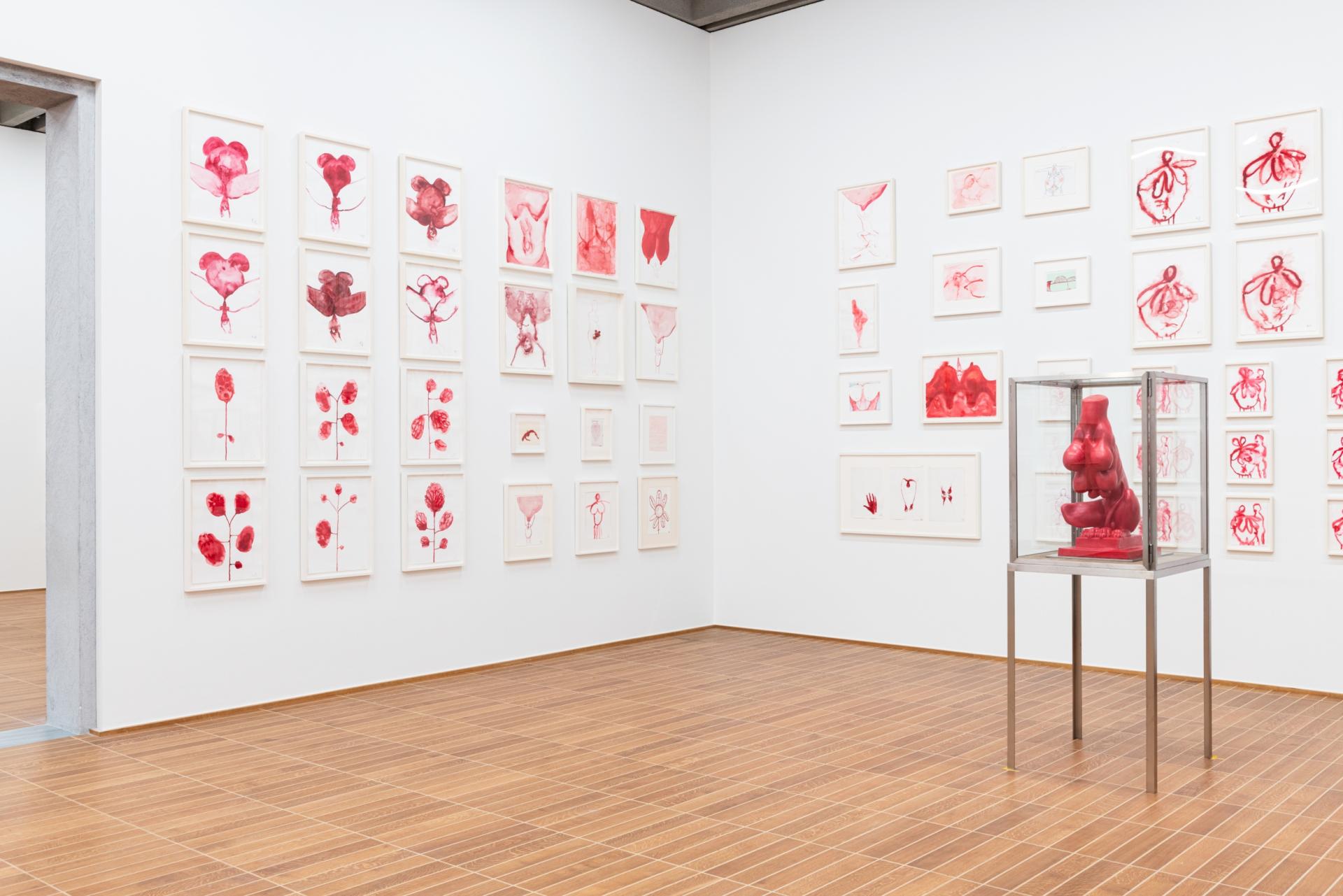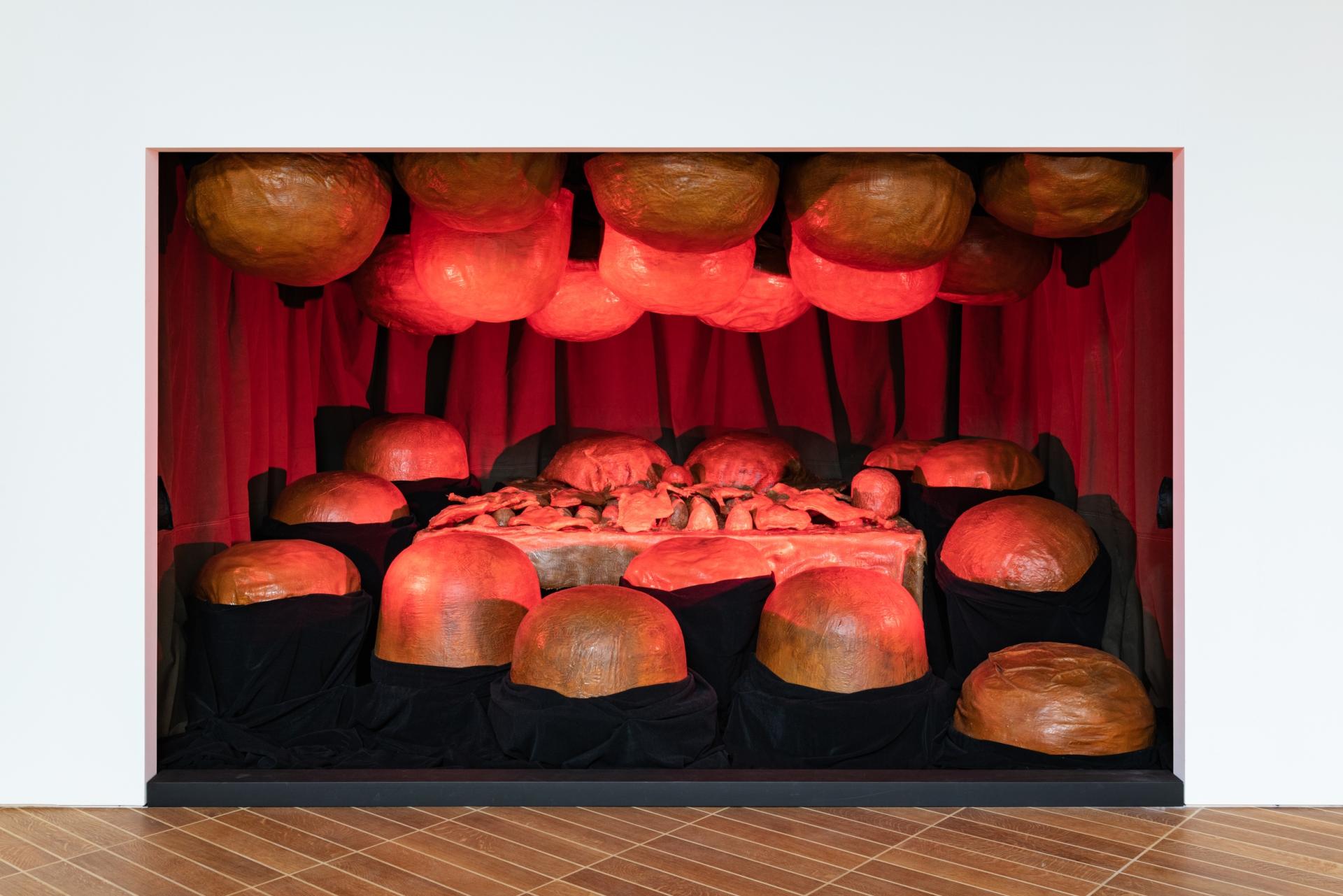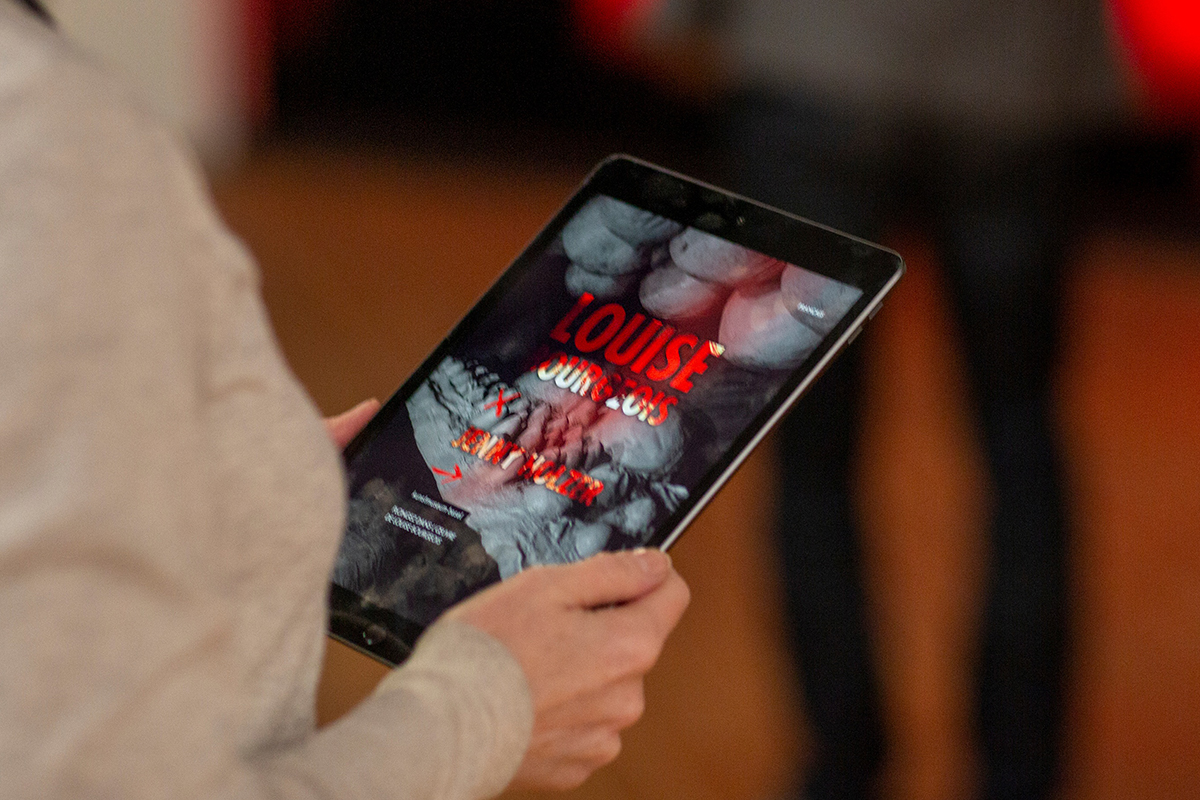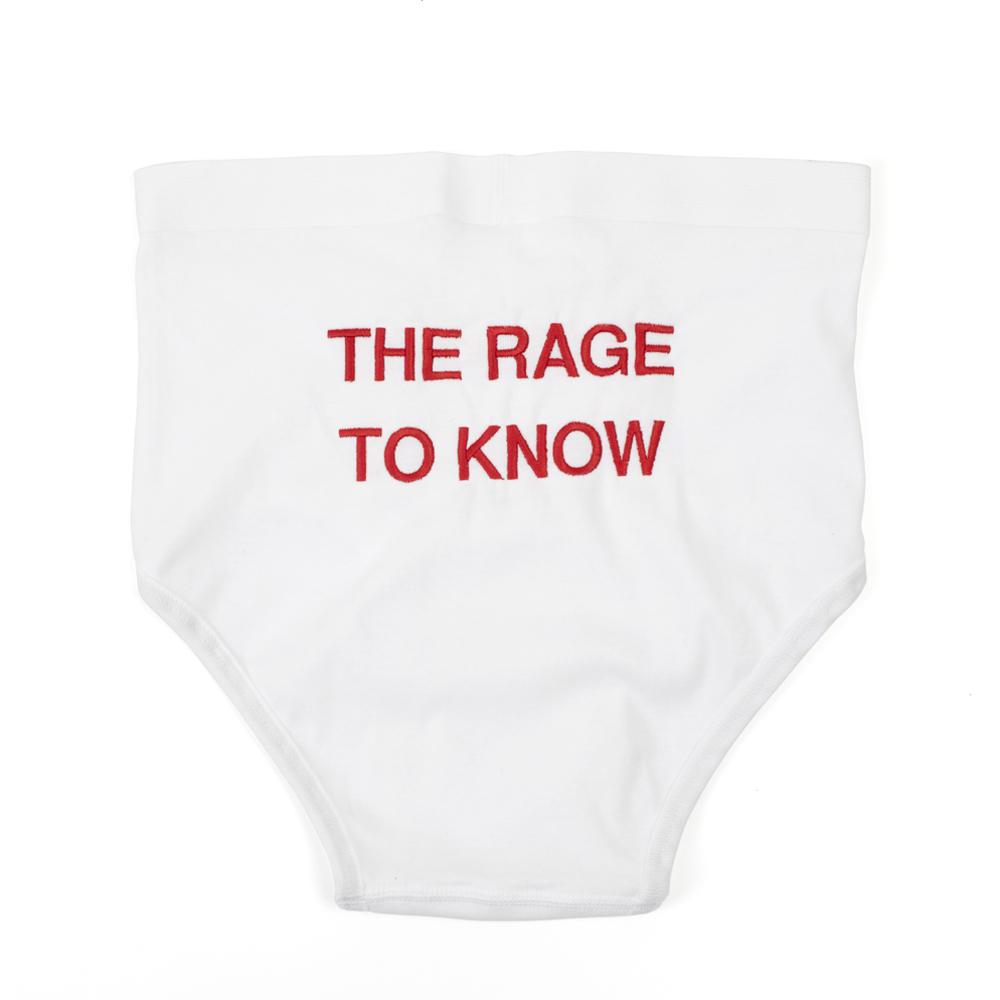Louise Bourgeois x Jenny Holzer
The Violence of Handwriting Across a Page
Jenny Holzer (née en 1950), artiste contemporaine parmi les plus importantes de sa génération, conçoit une exposition consacrée à l’oeuvre de Louise Bourgeois (1911–2010). Cette dernière est généralement considérée comme l’une des artistes les plus éminentes et influentes des 20e et 21e siècles. Jenny Holzer est connue dans le monde entier pour son exploration subversive du langage dans l’espace public au moyen de formes peu conventionnelles, à l’instar de plaques de rue, tee-shirts, projections et panneaux LED. L’oeuvre de Louise Bourgeois, marquée par un vif intérêt pour la psychologie, sonde les émotions humaines : l’amour, le désir, la dépendance, la sexualité, le rejet, la jalousie et l’abandon. À travers cette rencontre sans précédent de deux personnalités exceptionnelles de l’art américain, le Kunstmuseum Basel présente l’oeuvre de Louise Bourgeois vue par Jenny Holzer.
Holzer aborde la production artistique de Bourgeois par le biais de son abondant travail d’écriture : les volumineuses archives de Louise Bourgeois comprennent non seulement des journaux intimes et des correspondances s’étendant sur des décennies, mais aussi plusieurs centaines de textes psychanalytiques. Par ailleurs, elle utilisait souvent le mot écrit dans son travail artistique. Dans le cadre de l’exposition, une sélection d’oeuvres couvrant toutes les périodes de création de Louise Bourgeois — sculptures, installations, peintures, dessins, gravures et textes — regroupées de manière thématique sont présentées dans les salles du Neubau.
Commissaires : Jenny Holzer avec Anita Haldemann
-> Brochure des salles (Download PDF)
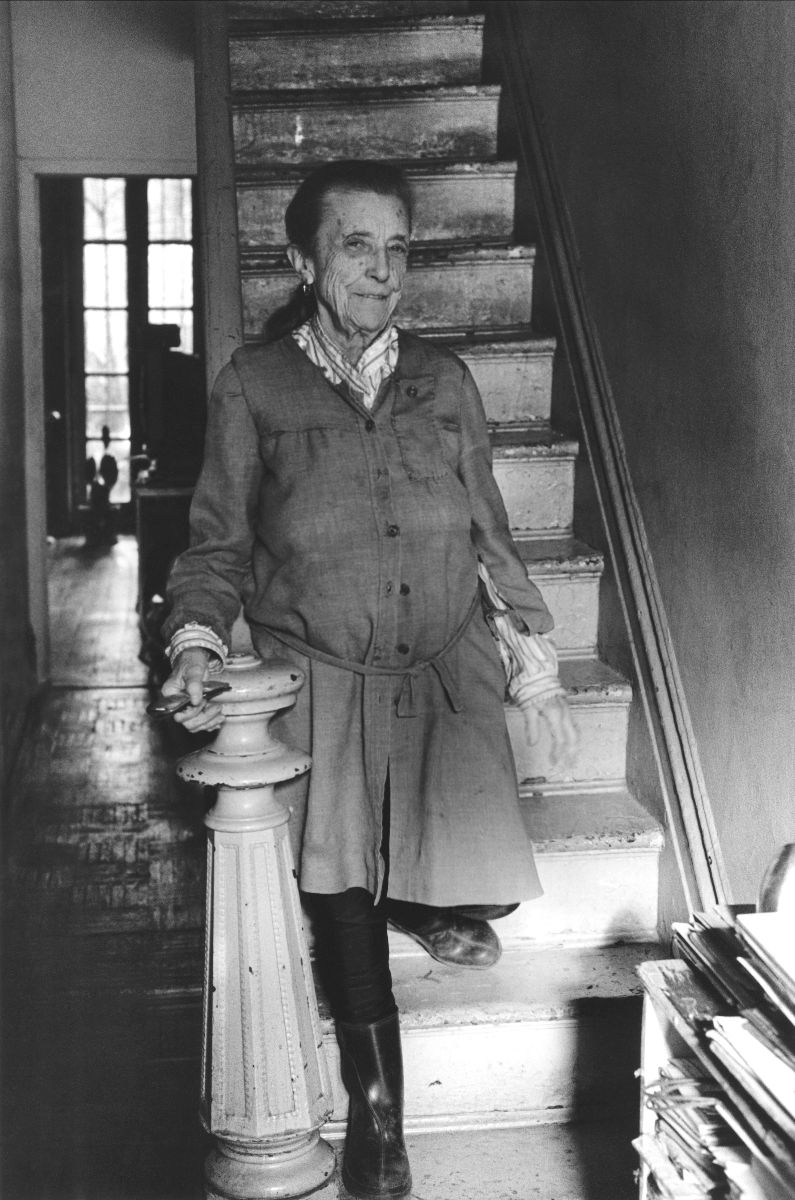
Credit: Louise Bourgeois descending the stairs in her home on West 20th Street in NYC in 1992. © The Easton Foundation, Photo: Claire Bourgeois
Louise Bourgeois
Louise Bourgeois (1911 Paris – 2010 New York) grew up near Paris, where her parents ran a business restoring tapestries. Her childhood was marked by a complicated relationship to her father, who cheated on Bourgeois' mother with the British nanny. This traumatic experience haunted her throughout her life and was the major source of inspiration for her art.
After pursuing studies in mathematics, Bourgeois attended a number of art schools in Paris. In 1938 she married the New York art historian Robert Goldwater (1907–1973) and moved to New York, where she raised three sons with him.
In the beginning, Bourgeois was focused on painting and printmaking. It was not until the late 1940s that she began to work as a sculptor. However, her almost obsessive writing, as well as drawing, always remained central forms of expression. After the death of her father in 1951, she became intensely involved in psychoanalysis.
Bourgeois varied the proportions and unusual materials of her work as much as its forms, which oscillated between abstraction and figuration. Strong emotions such as loneliness, jealousy, anger, and fear make up the common thread throughout her work.
The first major retrospective of Bourgeois' work was held at the Museum of Modern Art in New York when she was 70. Subsequently, she created her monumental spider sculptures and the famous and uncanny "Cells" – structures she enlivened with hanging fabric dolls and other objects. Art was her means of working through the past and practicing a kind of exorcism.
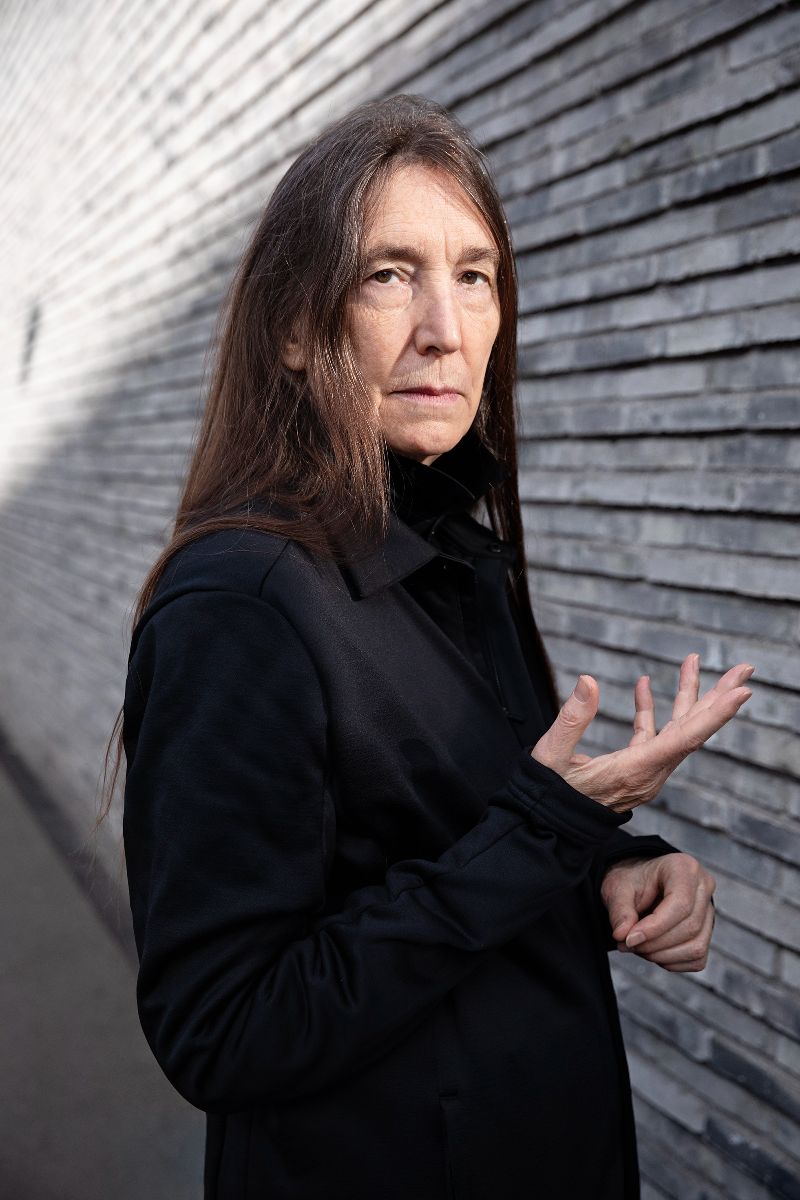
Jenny Holzer at the Kunstmuseum Basel | Neubau, 2022, Photo: Xandra M. Linsin
Jenny Holzer
Jenny Holzer (b. 1950 in Ohio, USA) lives in New York. She is widely regarded as one of the most important and influential artists of the 20th and 21st centuries. The conceptual and feminist multimedia artist is internationally known for her experimental and subversive handling of language in public space and her use of unconventional forms: from posters, street signs, and t-shirts to LED ticker signs and projections on building façades, landscapes, and moving vehicles.
In the 1970s, Holzer began hanging anonymous posters around the city in New York. She came to more widespread public attention in 1982 with her first LED text installations in Times Square. Her occasionally humorous but always jolting and provocative proclamations aim to combat ignorance and violence.
In 1989, Holzer became the first living female artist to represent the USA at the Venice Biennale, where she was awarded the Golden Lion. Her work has been exhibited in many major museums around the world, such as the Guggenheim Museums in New York and Bilbao, the Whitney Museum of American Art, and the Louvre Abu Dhabi.
LOUISE BOURGEOIS X JENNY HOLZER Projections
La combinaison du mot et de la lumière joue un rôle important dans l'œuvre de Jenny Holzer : les installations lumineuses temporaires comportant des lettres monumentales projetées sur des bâtiments et des paysages comptent parmi ses œuvres les plus connues depuis les années 1990.
L'exposition Louise Bourgeois x Jenny Holzer à Bâle ne fera pas exception : Pendant les premiers jours de l'exposition (du 16 au 22 février), Holzer projettera des extraits des écritures de Bourgeois sur trois bâtiments publics de Bâle : L'hôtel de ville, l'ancienne université sur le Rheinsprung et le Kunstmuseum Basel | Hauptbau.
Université et hôtel de ville: du 16 au 22 février, de 19 h à 22 h.
Kunstmuseum Basel | Hauptbau: du 16 au 22 février, de 18.30 h à 22 h.

